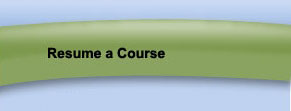|
page 6 of 11
License Classes
The classes of licenses are usually organized so that Class A is the license that indicates a person can drive the heaviest and largest vehicles. The license held by the vast majority of ordinary drivers is Class C. Motorcycles are usually Class M, although some jurisdictions simply add an endorsement permitting the holder to operate motorcycles as well as the class of vehicle for which he or she is licensed. Here is a brief description of 10 classes of driver’s licenses that exist in California:
|
Class Type
|
You May:..
|
|
Class ’A’
|
drive any legal combination of vehicles, including vehicles under Classes B and C. You may tow:
any single vehicle with a Gross Vehicle Weight Rating (GVWR) of more than 10,000 lbs.
any trailer bus, with endorsement
more than one vehicle, with endorsement
any vehicle under Classes B
|
|
Class ’A’ Firefighter
|
drive only Class A and Class B defined combination firefighting vehicles and all vehicles listed under Class C. You may tow a single vehicle with a GVWR of more than 10,000 lbs.
|
|
Class ’A’ Noncommercial
|
drive any of the vehicles under Class C. You may tow travel trailers weighing over 10,000 lbs. GVWR or 5th wheel travel trailers weighing over 15,000 lbs. GVWR when the trailers are not used for hire (pay or other compensation). Study material for this class of license is found in the Recreational Vehicles and Trailers booklet, available at any DMV office.
|
|
Class ’B’
|
drive:
any single vehicle with a GVWR of more than 26,000 lbs.
a 3-axle vehicle weighing over 6,000 lbs. gross
any bus (except a trailer bus), with endorsement
any farm labor vehicle, with endorsement
all vehicles under Class C
|
|
Class ’B’ Firefighter
|
drive only a Class B defined single firefighting vehicle and all the vehicles listed under Class C. You may tow a single vehicle with a GVWR of 10,000 lbs. or less.
|
|
Class ’C’
|
drive:
any 2-axle vehicle with a GVWR of 26,000 lbs. or less.
any 3-axle vehicle weighing 6,000 lbs. or less gross.
any housecar, 40 feet or less.
a vanpooling vehicle, designed to carry more than 10 but less than 15 persons including the driver. The driver must have a valid medical report on file with DMV and carry a valid medical card. The driver must also have a signed certification stating he/she has not been convicted of reckless driving, drunk driving, or a hit-and-run collision in the last five years.
|
|
Class ’M1’
|
operate any two-wheel motorcycle or any motorized vehicle in class M2.
|
|
Class ’M2’
|
only operate any motorized bicycle or moped or any bicycle with an attached motor.
|
|
Class ’C’ Commercial
|
drive any Class C vehicle carrying hazardous materials or wastes which requires placards. The hazardous materials (HAZMAT) endorsement must be on the license. You may tow the same vehicles listed in Class C.
|
Commercial License
The driver of a commercial vehicle may not operate a commercial motor vehicle for one year following the first conviction of specified offenses, including DUI, hit-and-run, or vehicular manslaughter, while driving any vehicle, not just a commercial vehicle. Two or more convictions of specified offenses, while driving any vehicle, will result in the permanent disqualification of a commercial driver from operating a commercial vehicle.
The Department of Motor Vehicles must report each conviction of a person who holds a commercial driver’s license from another state occurring within this state to the licensing authority of the home state of the licensee. This report shall clearly identify the person convicted; violation date; describe the violation specifying the section of the statute, code, or ordinance violated; identify the court in which action was taken; indicate whether a plea of guilty or not guilty was entered, or the conviction was a result of the forfeiture of bail, bond, or other security; and include special findings made in connection with the conviction.
|








